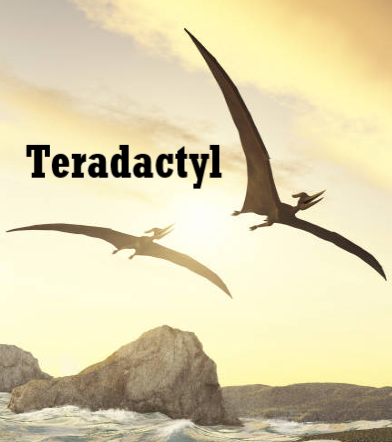Soaring across the skies millions of years ago, the creatures we call “teradactyls” captured the imagination of both prehistoric giants and modern minds. But were they truly dinosaurs, as popularly depicted? This article delves into the fascinating world of teradactyls, exploring their unique anatomy, intriguing behaviors, and enduring legacy.
Table of Contents
Unveiling the True Lineage
Though often mistakenly referred to as dinosaurs, teradactyls belonged to a separate group known as pterosaurs. While both shared aerial dominance, pterosaur wings formed from a stretched skin membrane, unlike the feathered wings of true dinosaurs. This distinction places teradactyls closer to reptiles like lizards than their dinosaur counterparts.
Unveiling the Anatomy of Soaring Masters
Imagine a wingspan stretching up to 6 meters, a lightweight skeleton, and razor-sharp claws – that’s the physical embodiment of a teradactyl. Their elongated fourth finger supported the leathery wing membrane, granting them remarkable flight capabilities. Sharp beaks and teeth hinted at their varied diets, while large eyes suggest keen eyesight for hunting and navigation.
Mapping Their Prehistoric Playground
Teradactyls soared across the skies during the Mesozoic Era, predominantly roaming over what is now Europe, Africa, and parts of Asia. They thrived in diverse environments, from coastal regions to lush inland forests, adapting their wingspans and hunting strategies to their surroundings.
Unveiling the Teradactyl Diet
Though the “pterodactyl” moniker conjures images of fearsome hunters, their actual diet varied across species. Some possessed sharp teeth suited for catching fish, while others had hooked beaks designed for scavenging or scooping up insects. This dietary diversity further highlights the adaptability of these prehistoric flyers.
Social Structures in the Sky
While much remains unknown about their social interactions, some fossil evidence suggests that certain teradactyl species may have lived in colonies. This hints at the possibility of complex social structures, potentially involving cooperative hunting or shared nesting grounds.
Reproduction and Growth
Similar to modern reptiles, teradactyls likely laid eggs. Fossil evidence suggests they may have built nests in colonies, with adults caring for their young until they were ready to take flight. However, the specifics of their reproductive behavior remain shrouded in the mists of time.
Where Did the Teradactyls Go?
The reign of the teradactyls came to an abrupt end with the mass extinction event 66 million years ago. While the exact cause remains debated, theories suggest asteroid impacts, climate change, or a combination of factors wiped out these magnificent creatures alongside many other dinosaurs.
Teradactyls in Culture and Imagination
Despite their extinction, teradactyls continue to capture our imagination. From ancient folklore depicting them as monstrous creatures to their popular portrayal as flying dinosaurs in film and television, these prehistoric marvels have transcended time, reminding us of the wonders that once soared through the skies.
FAQ
Were teradactyl actually dinosaurs?
No, teradactyl were not actually dinosaurs! Although often grouped together in popular culture, dinosaurs and pterosaurs (including teradactyls) belong to distinct branches on the evolutionary tree. The main difference lies in their wings: dinosaurs used feathers for flight, while pterosaurs had wings formed from a skin membrane stretched between their elongated fourth finger and their bodies.
What did teradactyls eat?
The diet of teradactyls varied depending on the species. Some had sharp teeth and beaks ideal for catching fish, while others had hooked beaks suited for scavenging or scooping up insects. Their diverse adaptations allowed them to exploit various food sources in their prehistoric environments.
How big were teradactyl?
Teradactyls came in a wide range of sizes. While the “pterodactyl” image often evokes large creatures, some species had wingspans as small as a sparrow, while others boasted impressive wingspans stretching up to 6 meters! Understanding their diverse sizes helps us appreciate the various ecological niches they filled.
Why did teradactyls go extinct?
The mass extinction event 66 million years ago, likely caused by an asteroid impact or other environmental changes, wiped out teradactyls along with many other species. While the exact reason remains debated, the sudden shift in global conditions proved too much for these once-thriving creatures to adapt to.
Are there any living animals related to teradactyls?
Unfortunately, no living animals directly descend from teradactyls. However, some argue that birds are the closest living relatives to pterosaurs, sharing a common ancestor that lived millions of years ago. Both groups possess wings evolved from forelimbs, although their structures differ significantly.

John an experienced IT specialist with over a decade of experience in the industry. He holds a Bachelor’s degree in Computer Science and has worked in various positions, including software developer, system administrator, and network engineer. John’s expertise includes cloud computing, cybersecurity, and data analytics. He has completed numerous certifications in these areas and is highly knowledgeable in the latest technologies and trends.

